Heavy steel work is underway at Zalk Josephs Fabricators in Stoughton, Wis., (an AISC Member/Certified fabricator) for Chicago’s 150 N. Riverside office tower project under construction in the city’s West Loop. The 1.2 million sq.-ft building project is the first in the U.S. to use A913 70ksi high-strength steel. It’s also using A913 65ksi W36x925 hot-rolled wide-flange sections, which are the largest rolled sections currently available in the world. In fact, some of the columns are using two of the W36x925s sistered up to create a mega column at the ends of the building.
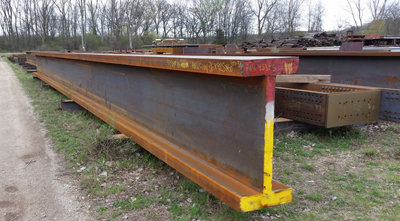 These W36x925s are the heaviest hot-rolled wide-flange sections in the world. They’re over 43 in. deep with 4.5 in.-thick flanges and a 3-in. web. This 60-ft-long beam is roughly the size of a humpback whale, weighing approximately 27.75 tons. The sections made the journey from the ArcelorMittal steel mill in Luxembourg last winter. No preheat for CJP welds is one of the many advantages to using this ASTM A913 65-ksi steel.
These W36x925s are the heaviest hot-rolled wide-flange sections in the world. They’re over 43 in. deep with 4.5 in.-thick flanges and a 3-in. web. This 60-ft-long beam is roughly the size of a humpback whale, weighing approximately 27.75 tons. The sections made the journey from the ArcelorMittal steel mill in Luxembourg last winter. No preheat for CJP welds is one of the many advantages to using this ASTM A913 65-ksi steel.
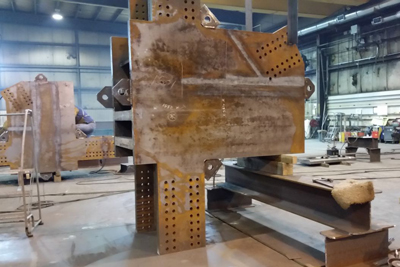 A mega node for the four-story mega trusses in the 150 N. Riverside building. Zalk Josephs has their work cut out for them with these larger-than-life elements in one of the first office towers to be built in Chicago since 2009. Standing over 10 ft tall, these pieces dwarf everything surrounding them.
A mega node for the four-story mega trusses in the 150 N. Riverside building. Zalk Josephs has their work cut out for them with these larger-than-life elements in one of the first office towers to be built in Chicago since 2009. Standing over 10 ft tall, these pieces dwarf everything surrounding them.
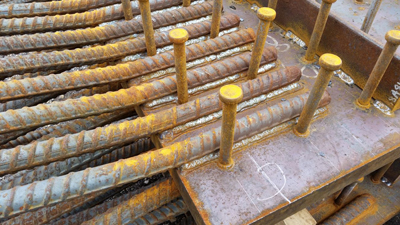 High-strength reinforcing bars are welded to steel plates with headed studs on them to help anchor these elements in the concrete core.
High-strength reinforcing bars are welded to steel plates with headed studs on them to help anchor these elements in the concrete core.
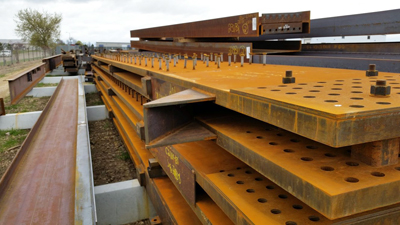 Thick steel plates are used to help resist the loads passing through the concrete core of the building. Some additional steel elements are attached to the thru-plates in order to create a “shoe” or a place for the lifting jacks to push against during the erection of these massive composite truss elements.
Thick steel plates are used to help resist the loads passing through the concrete core of the building. Some additional steel elements are attached to the thru-plates in order to create a “shoe” or a place for the lifting jacks to push against during the erection of these massive composite truss elements.
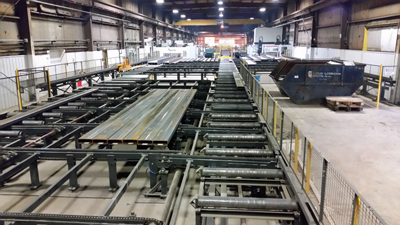 Staring down the production line, this is a look at the conveyor tables which carry the steel pieces to cutting, drilling, coping and fitting stations. The installation of this new equipment at Zalk Josephs has expanded fabrication capabilities, increased automation and improved efficiency at the facility.
Staring down the production line, this is a look at the conveyor tables which carry the steel pieces to cutting, drilling, coping and fitting stations. The installation of this new equipment at Zalk Josephs has expanded fabrication capabilities, increased automation and improved efficiency at the facility.